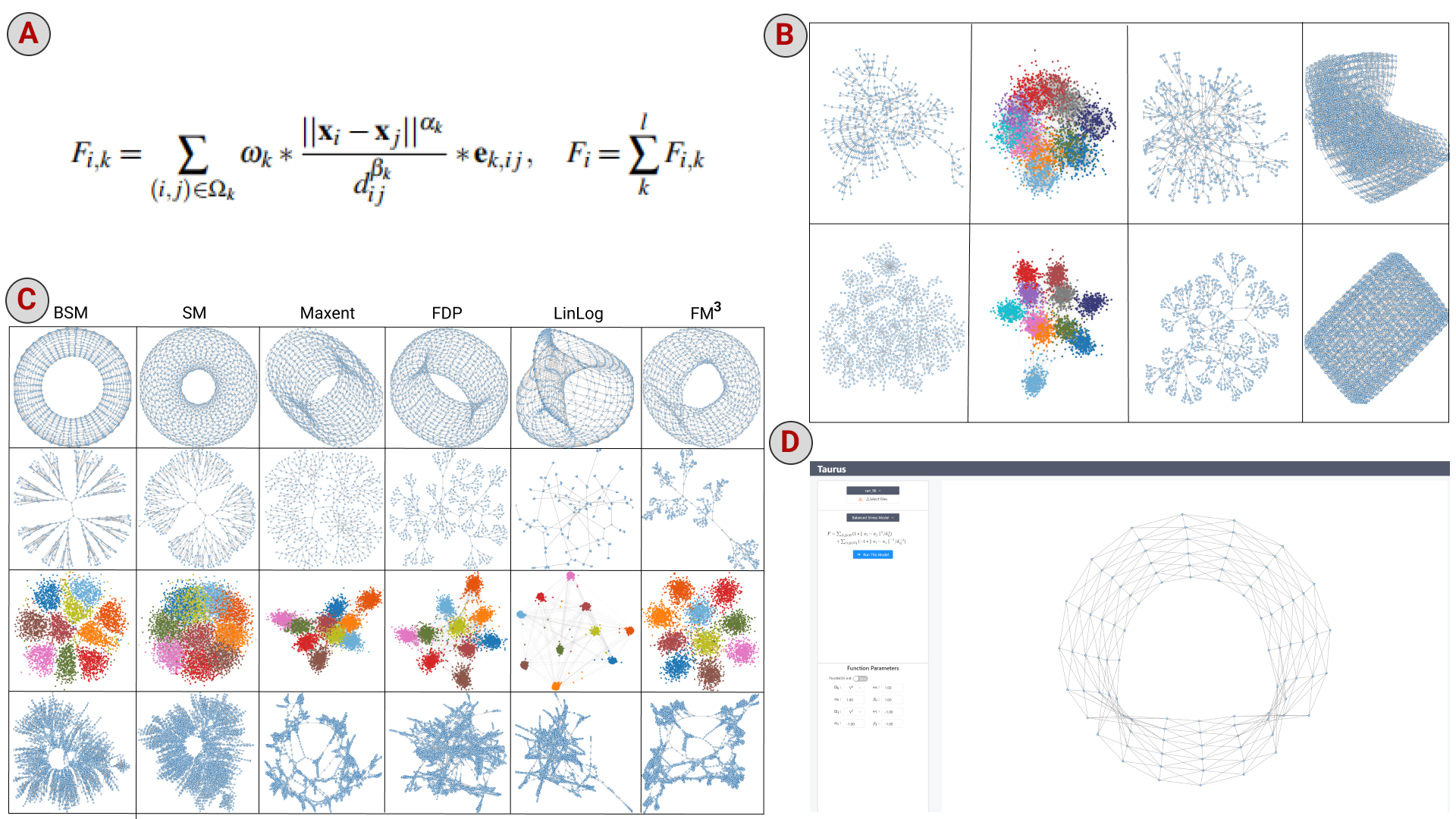Taurus: Towards A Unified Force Representation and Universal Solver for Graph Layout
Mingliang Xue, Zhi Wang, Fahai Zhong, Yong Wang, Mingliang Xu, Oliver Deussen, Yunhai Wang
View presentation:2022-10-20T15:57:00ZGMT-0600Change your timezone on the schedule page
2022-10-20T15:57:00Z

Prerecorded Talk
The live footage of the talk, including the Q&A, can be viewed on the session page, Graphs and Networks.
Fast forward
Abstract
Over the past few decades, a large number of graph layout techniques have been proposed for visualizing graphs from various domains. In this paper, we present a general framework, Taurus, for unifying popular techniques such as the spring-electrical model, stress model, and maxent-stress model. It is based on a unified force representation, which formulates most existing techniques as a combination of quotient-based forces that combine power functions of graph-theoretical and Euclidean distances. This representation enables us to compare the strengths and weaknesses of existing techniques, while facilitating the development of new methods. Based on this, we propose a new balanced stress model (BSM) that is able to layout graphs in superior quality. In addition, we introduce a universal augmented stochastic gradient descent (SGD) optimizer that efficiently finds proper solutions for all layout techniques. To demonstrate the power of our framework, we conduct a comprehensive evaluation of existing techniques on a large number of synthetic and real graphs. We release an open-source package, which facilitates easy comparison of different graph layout methods for any graph input as well as effectively creating customized graph layout techniques.